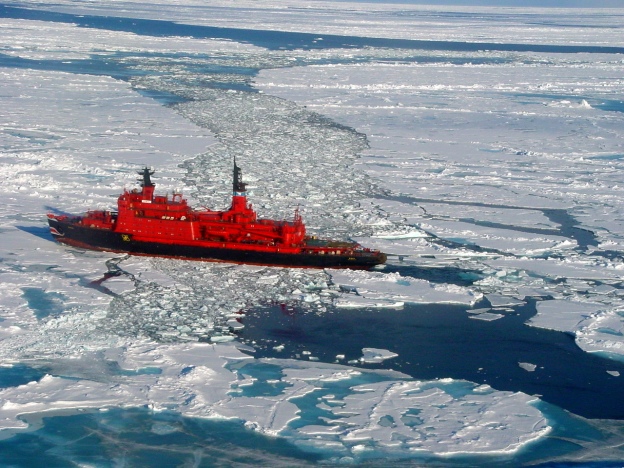Melting ice in the Arctic Ocean is bringing a centuries-old dream closer to reality for Russia: a shipping passage through its northern waters that could put it at the center of a new global trade shipping route…A host of issues remain, such as icebreaker escort tariffs, transit costs and navigational unpredictability in the Arctic Circle. But an opening of the passage (the Northern Sea Route-NSR) would put Russia at the center of a new global shipping route for energy supplies and cargo. Moscow says it has the right to restrict passage and set prices for transit, and the route would also give it an important bargaining chip in its ties with China—one of the biggest beneficiaries of the 3,500-mile long passage…
So far this year, traffic regulated by the Russian government is up 11% from the record 1,014 trips made in 2020….The traffic in 2020 was up more than 25% from 2019 with 33 million tons of cargo, oil and liquefied natural gas, and Moscow expects that number to grow. Russian President Vladimir Putin has said he wants cargo to double to 80 million tons by 2024.The State Atomic Energy Corporation, or Rosatom, which manages a fleet of nuclear icebreakers that can cut through ice up to 10-feet thick, is drafting plans to station personnel along the route, boost port infrastructure along the shipping lane to allow for loading, and provide navigational and medical aid for ships. Rosatom has already stationed one floating nuclear-power plant on the route, to help with onshore construction…
“There is a certain interest in the NSR from the Chinese Navy for strategic mobility to move troops between Pacific to Atlantic theaters,” said Vasily Kashin, an expert on Russia-China relations at the Moscow-based Higher School of Economics. “And they do have this interest in establishing their presence on the Atlantic.”
Russia has already boosted its military presence in the Arctic and along the Northern Sea Route, but the U.S. says Moscow’s legal jurisdiction doesn’t extend to the waters where the Kremlin is working to develop the passage….Russian authorities are still determining the transparent tariff duties, both for transit and for icebreaker escorts along the passage, that are key to attracting both investment and cargo. Traffic on the route, however, is already guaranteed by Russia’s increasing production of Arctic oil and gas. The majority of vessels carry LNG from the port of Sabetta, where gas from Russian energy giant Novatek’s Yamal project is loaded for consumers in Europe or Asia. Crude from Rosneft’s planned Vostok oil field project will also be sent along the route when it comes onstream….
Excerpts from Thomas Grove, Melt Boosts Russia Shipping Arctic, WSJ, June 24, 2021






 Mr Xi has been showing a growing interest in Arctic countries. In 2014 he revealed in a speech that China itself wanted to become a “polar great power”..,,In January 2018 the Chinese government published its
Mr Xi has been showing a growing interest in Arctic countries. In 2014 he revealed in a speech that China itself wanted to become a “polar great power”..,,In January 2018 the Chinese government published its